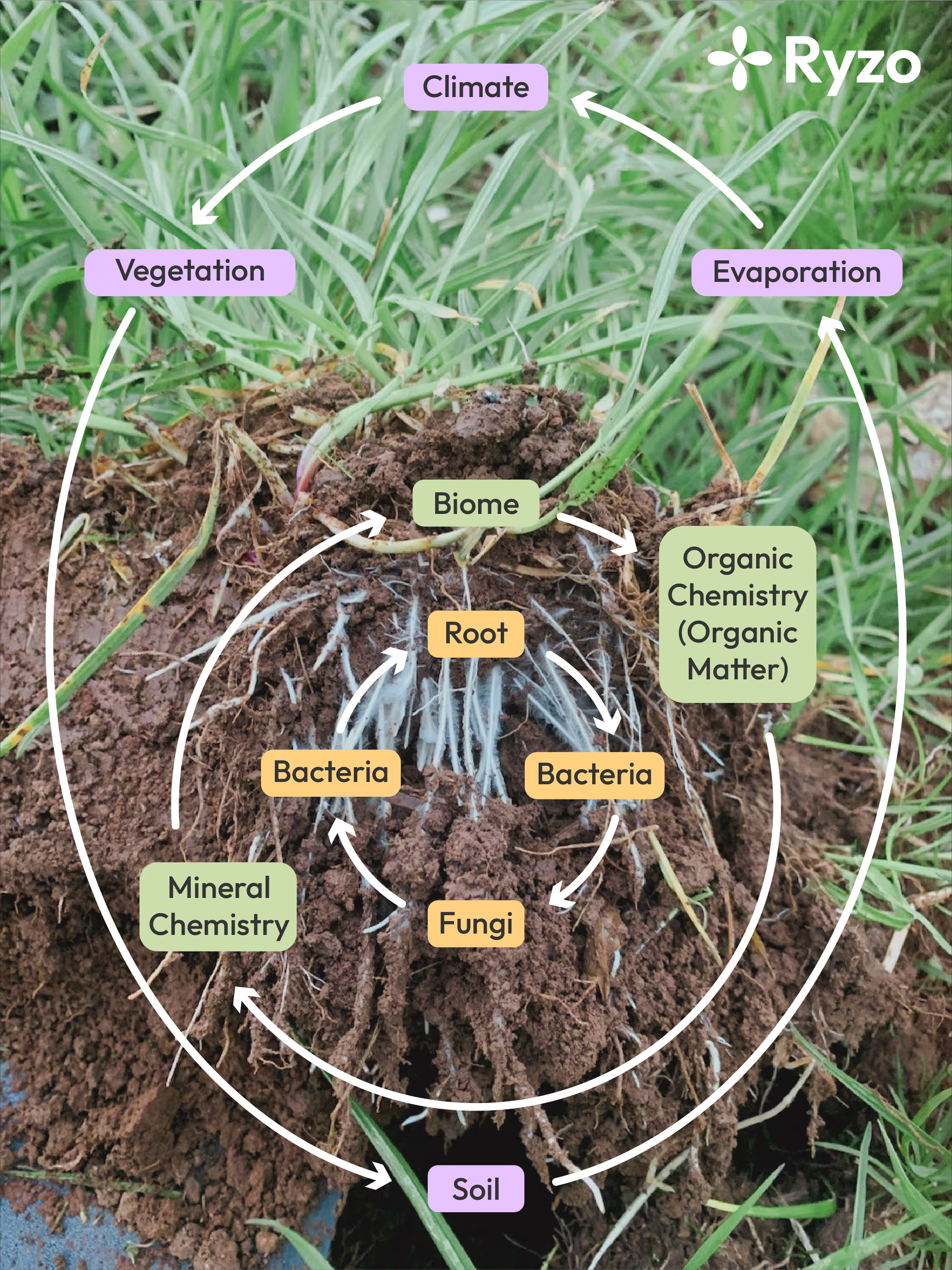
Download Our Latest Whitepaper:
Operational and Capital Ecoservice Accounting Standards for Farm Carbon
Burn it, abuse it, rubbish it, pollute it, degrade it…but our civilisation is built upon it, so we can’t continue to ignore it. All agricultural civilisations are foundered on soil and with soil abuse, have collapsed. The writing is on the wall. Today is international soil day, December 5th.

As I mentioned last year it is a thing, a fair dinkum important thing.
Without a healthy functional soil our civilisation will, like those that went before, collapse. But this time the whole world is involved. As every civilisation based on agriculture before ours was organic – and they collapsed, it is clear that being organic is not enough.
If, in seeking production from the land as agriculture does, or covering the land as cities do, we impede the components of the system that make a functional landscape – the landscape decays. Landscape function collapses fastest when soil function is destroyed.
Critically, and often ignored, a primary climate forcer is landscape management. Specifically, how land processes solar energy when degraded or bare, creating up to 6X more sensible heat (infra-red radiation) over latent heat (evapotranspiration) for the blanket (the green houses gases) to reflect back onto earth, thereby increasing local temperature, extreme events and reducing rainfall.
This is why landscape management is a primary climate forcing agent; the increasing heat in our atmosphere is directly associated with the removal of vegetation cover from soil and reduction of organic matter in soil.
From the smallest to the largest; from microbes to climate: all are interlinked. In a healthy soil, plant roots feed carbohydrates to bacteria, which in turn feed fungi which oxidise and/or solubilise structured organic matter and rock minerals to feed the bacteria’s simple organic molecules and minerals, and together they feed nutrients to the plant.
This is a circular system that makes a functional soil biological system. In turn this circular biology system, with mineral chemistry and organic chemistry work as a system to optimise the spatial geometry of the soil (pore space) to maximise air and water infiltration and storage. This functional soil works in harmony with the regolith below, and the topography above, to influence the climate – creating a functional landscape.

Systems within systems. Disrupt the smallest and impact the largest, that is what we have done.
We need agricultural production systems that, in focusing on the smallest system, maintain vegetative cover while improving the soil biome to increase soil carbon, which includes biodynamics, extreme conservation agriculture and regenerative agriculture. That is our future.
A gradual change in mindset is occurring, for example the much anticipated launch of Australia’s first national soil action plan; another step in the right direction!
The move is a good one, but we need to move quickly. Our climate and civilisation depends on restoring the dirt we’ve cultivated back to productive soil.
Every day should be international soil day, as it is fair dinkum important.